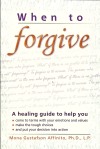It’s ironic I know, but I am finding hope in the fact that we’ve been here before as a nation. The same problems bug us – different faces – same issues, having led us not to resolutions, but rather to more of the same. Why hopeful? I’ll be darned if I know. It should leave me feeling even more distressed, verging on despair. I guess it’s the fact that the things we live through have meaning only with the perspective of time, so I perceive myself (and you) living in the maelstrom, out of which will come who knows what. And the fact that my father died in bed at age 86. The world had not collapsed entirely during his journey.
OK, let me give that first paragraph some perspective. As I think I have mentioned, I am working on the fictionalized biography of my father, born in 1890, emigrated from Sweden to the United States in 1909. I have several sources to draw on for specific information about him, but I’m also searching sites to give me background on the times in which he lived.
One book that has delighted me with useful, and, in some cases nostalgic, information, is David E. Kyvig’s “Daily Life in the United States: 1920 – 1940.” There’s lots to comment on, but my focus here is the recognition that “Oh my goodness. We’ve been here before.” Weather changes creating financial havoc (the dust bowl). The great depression; the poorest suffering most, long before the fall of the stock market hit the upper percent. Government intrusion into personal life with the Volstead Act, created by the very people who argued against government intrusion. (In my mind equivalent to the current incursion into people’s reproductive rights by those who argue against government control). The unanticipated negative results of banning alcohol – ie. Rampant law-breaking and mob violence. How interesting to see that which was once part of the culture becoming “illegal.” Was there an element of anti-immigrant sentiment? It apparently did destroy the French restaurant business, for example. Technological advances leading to job loss and ultimate creation of new jobs.
Questions whether this time the period of creating replacement jobs will happen quickly enough to save the middle class.
So, why be hopeful? It’s some crazy twist of my own psychology, I guess. Sometimes I advise folks that it’s better to give up hope than to keep on wishing for that which cannot happen. Maybe that’s it. I’m not ready to give up wishing that things will get better if we keep on trying.
With this entry, my Asia/Pacific excursion comes to an end. And a very powerful end it is!
Our last stop was in Nagasaki, the site that was devastated by the second dropping of the atomic bomb. Only by chance was Nagasaki destroyed, having been the back-up target when weather prevented hitting the initial choice.
The header tells the first part of the story… the total devastation of what was a prison with people in it. All that was left were those rows of melted and twisted material. Here’s the complete photo.

And here’s a photo of the nearby monument erected over ground zero.

If that “prison” photo doesn’t send chills and warnings, I don’t know what might. That’s the devastation side of the experience at the Peace Park.
Now for a series of photos illustrating the other side of the story. The peace park is a monument to the desire for non-violent resolutions to conflict. I couldn’t help but be sensitized to the nuances of forgiveness. At no point in the park or the museum, or the words of the tour guide, did anyone say anything like “When the US dropped the bomb.” In all cases it was “When the bomb dropped.” That simple turn of phrase makes it what they want it to be – a lesson to be learned.
The Peace Park is beautiful and peaceful — except for the tourists, that is. I would have loved to go back for a quiet period with no one taking photos of family and friends in front of the various statues. It almost seemed like desecration. But that’s what tourists do, and I’m sure most were also appreciating the potential serenity of the Park with the powerful message of love and peace.

Many countries (if not all) have contributed statues to the park. Here are some that I managed to photograph with no tourists in front of them.




And finally the visit to the museum, including a wall laying out in a straightforward, factual way the process of arriving at the decision to use the bomb. Again, the message was clearly couched in “When the bomb dropped,” not, as might have been, “When they dropped the bomb on us.”
The photo below marks the entrance to the museum

I found myself pleased to see Eisenhower’s opinion regarding its use. He was not alone in his opinion.
And now for the bookend. I have no photos to show, but I was at Los Alamos, New Mexico, last week — seeing where it began. A moving experience, in effect wrapping the whole thing up in one emotional package. I won’t bore you with going into a discussion of my reactions, but I will say the thoughts and emotions did roil.
This whole experience has only served to strengthen my commitment to restorative practices.
Thanks for joining me on this Asia/Pacific journey.












